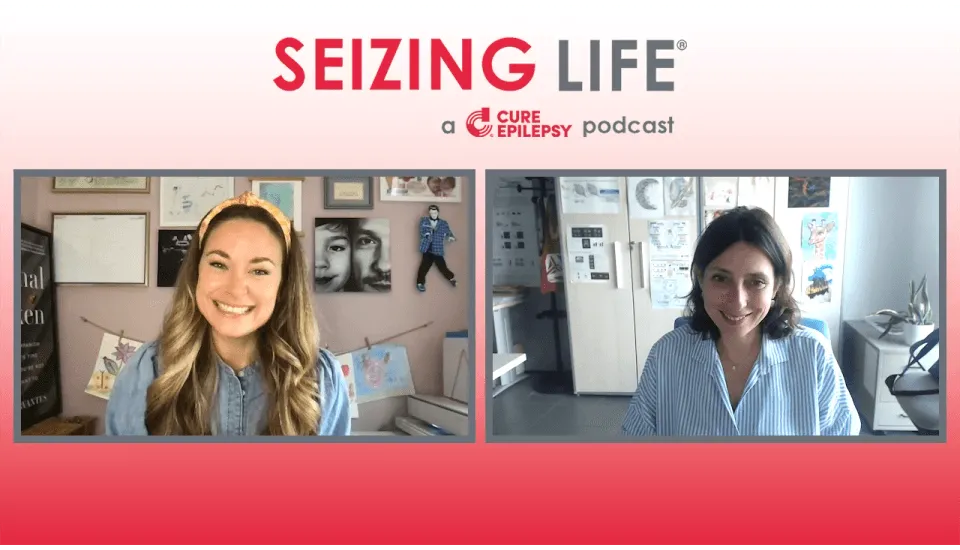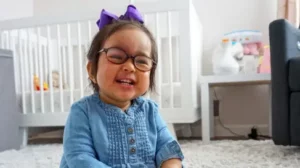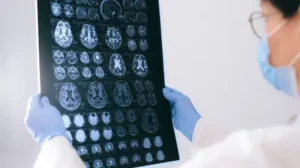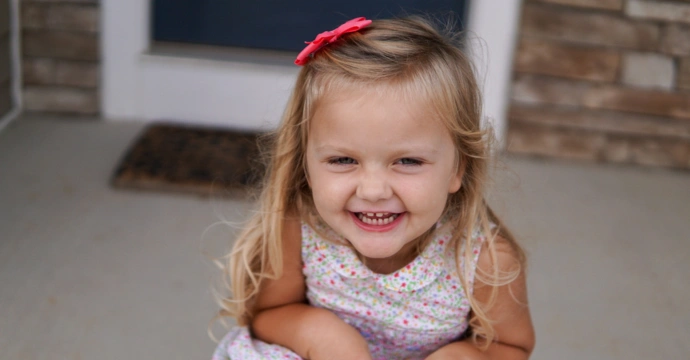On July 9, 2023, our perfectly healthy 2-year-old daughter, Everly, woke up as I was laying her down for bed. She looked to the far right, went limp, and stopped responding. We rushed her to the emergency room, where we discovered she was having a seizure. Despite multiple rounds of medication, she continued to seize for 40 minutes.
Due to concerns about aspiration and potential brain damage, she was intubated and flown to Children’s National in Washington, D.C. Everly spent 24 hours in an induced coma, followed by 3 days in the Pediatric Intensive Care Unit (PICU) recovering.
Standing by while our normally lively and talkative daughter lay in a bed connected to machines that kept her sedated and breathing was a nightmare. While extended family was asking questions like “why did this happen and will it happen again?” I sat next to her bed holding her hand, praying to God that she would wake up and be Everly, be herself.
In July 2024, after another seizure, a hospital stay, and an abnormal EEG, Everly was officially diagnosed with focal epilepsy and prescribed daily medication.
Now at 4 years old, she has experienced three more seizures that we know of. Each EEG has shown increasing abnormal activity in her brain, and she has had small breakthrough seizures despite her medication. This is a life-changing disorder for not only our daughter but our entire family. We carry emergency medication everywhere we go, Everly wears a monitor at night, we purchased an $1800 camera to watch her while she sleeps, she takes medication she dislikes twice a day, wears a medical ID bracelet daily, and to ensure she gets enough sleep and reduce the risk of a seizure, she takes melatonin before bed every night.
As a researcher, I feel more at ease the more I know. I have learned a great deal, and two things stand out: the lack of awareness and the lack of research regarding epilepsy. Epilepsy is the fourth most common neurological condition; 3.4 million Americans live with epilepsy, including 456,000 children. One in 26 people will experience epilepsy in their lifetime, and one in 1,000 people with controlled epilepsy will die from Sudden Unexpected Death in Epilepsy (SUDEP). The risk is even higher for those with uncontrolled epilepsy, where one in 150 may die from SUDEP. These figures are likely to be much higher in reality, as many coroners and medical personnel are not adequately trained to identify the signs of SUDEP. The epilepsy community is significantly overlooked and misunderstood.
The disparity in research and awareness for epilepsy compared to other illnesses that affect fewer Americans is staggering. While epilepsy organizations do their best to address these issues, a National Plan would help increase awareness, fund research for cures and life-saving devices, ensure accessibility to healthcare, and create a better future for children like Everly.
We live in fear each day that our sweet, creative, smart, and funny daughter will experience a seizure that could lead to irreversible brain damage, physical injury, or death. We worry about her future: Will her seizures become more frequent and severe? Will she be able to drive, maintain a job and build healthy relationships? How will epilepsy impact her mental health and financial independence?
I am not a politician, and some days I am baffled as to why this is even a request we have to make. Why wouldn’t we, as a nation, want to provide our citizens with the best possible future? A National Plan could lead to significantly better outcomes for Everly’s future.





